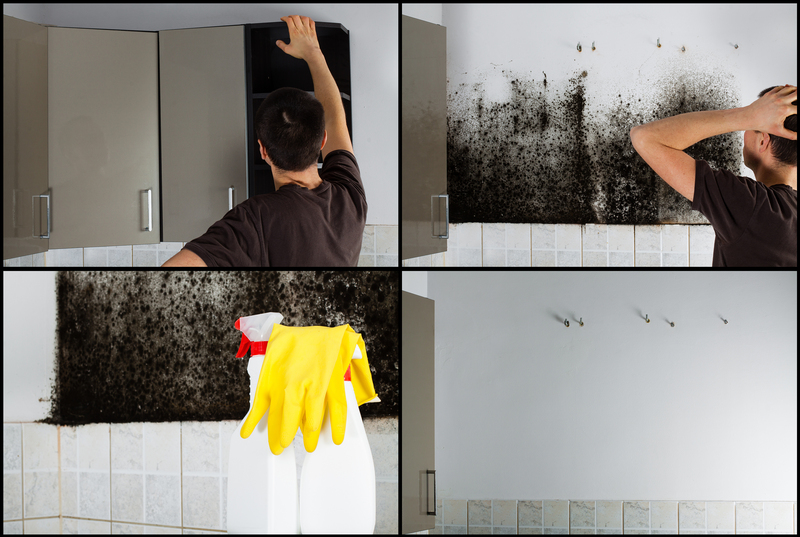The Essential Importance of Air Quality in Indoor Spaces
Posted on 19/08/2025
The Essential Importance of Air Quality in Indoor Spaces
Did you know that we spend up to 90% of our lives indoors? From our homes and offices to schools and shopping centers, the quality of the air we breathe inside these environments can have a significant impact on our health, comfort, and even productivity. In today's modern world, the essential importance of air quality in indoor spaces has become a fundamental concern, especially as we discover more about the hidden dangers of indoor air pollution. This comprehensive article explores why maintaining healthy indoor air is crucial, what affects it, and actionable steps you can take to ensure a safer and more pleasant environment for yourself and others.
What Is Indoor Air Quality?
Indoor Air Quality (IAQ) refers to the condition of the air found within and around buildings and structures. This involves a complex interplay of pollutants, moisture, ventilation, and external environmental factors. A high standard of indoor air quality ensures that the air is safe and comfortable to breathe, reducing risks to human health.
Common Indoor Air Pollutants
- Particulate matter (PM2.5 and PM10): Tiny airborne particles that come from dust, dirt, or smoke.
- Volatile Organic Compounds (VOCs): Harmful gases from cleaning products, paints, and furnishings.
- Carbon monoxide: A colorless, odorless gas from faulty heating systems or car exhausts in garages.
- Biological contaminants: Mold, bacteria, viruses, pet dander, and pollen.
- Radon: A naturally occurring radioactive gas that can seep in from the ground.
- Asbestos and lead: Older buildings may still harbor these toxic substances.

Why Is Indoor Air Quality So Important?
Ensuring good air quality in indoor spaces goes far beyond comfort--it is a critical issue for overall health and wellbeing. Poor indoor air can affect everyone, but certain groups, such as children, the elderly, and those with respiratory or heart problems, are especially vulnerable.
Health Effects of Poor Indoor Air Quality
- Respiratory Disorders: Prolonged exposure to indoor air pollution is linked to asthma, bronchitis, and other respiratory issues.
- Allergic Reactions: Mold spores, dust mites, and pet dander commonly trigger allergies.
- Cognitive Impairment: Studies reveal that poor indoor air can decrease concentration, memory, and mental performance.
- Serious Illnesses: Long-term exposure to harmful pollutants increases the risk of cardiovascular disease, cancer, and neurological disorders.
- Sick Building Syndrome: A condition where occupants experience symptoms like headaches, fatigue, and respiratory irritation as a result of time spent in a particular building.
Prioritizing indoor air quality is not just a safety measure, but an investment in the health and productivity of occupants.
Factors Impacting Indoor Air Quality
Ventilation
One of the most significant factors influencing indoor air quality is ventilation. Adequate ventilation introduces clean outdoor air, while removing stale or polluted indoor air. Buildings with poor ventilation can trap pollutants inside, making it essential to prioritize fresh airflow, whether through windows, mechanical systems, or air purifiers.
Source of Pollutants
Everyday activities like cooking, cleaning, and renovating can release pollutants into indoor spaces. Inadequate maintenance of HVAC systems or leaking appliances can also introduce or circulate contaminants.
Humidity Levels
Maintaining the right humidity is key for healthy air indoors. Low humidity can cause skin and respiratory problems, while high humidity encourages mold growth and dust mites.
Building and Furnishing Materials
Certain construction and furnishing materials, such as pressed wood or vinyl flooring, can emit gases over time. Choosing low-emission materials is one way to help improve indoor air quality.
How To Improve Indoor Air Quality
Effective Strategies for Cleaner Indoor Air
- Increase ventilation: Open windows regularly, use fans, or install energy-recovery ventilation systems.
- Maintain HVAC equipment: Change filters and clean ducts regularly to prevent pollutant buildup.
- Control humidity: Use dehumidifiers in damp areas and exhaust fans in bathrooms and kitchens.
- Reduce indoor pollutants: Choose low-VOC products, avoid smoking indoors, and limit use of candles or incense.
- Regular cleaning: Vacuum with HEPA filters, mop floors, and dust surfaces to minimize particulate matter.
- Test for radon: Use affordable kits to check radon levels and mitigate if necessary.
- Opt for air purifiers: Use high-efficiency air purifiers with HEPA and carbon filters, especially in bedrooms or living areas.
- Add indoor plants: Certain houseplants may help absorb some VOCs and improve air freshness (but check for allergenic plants if you have sensitivities).
Innovations in Air Quality Monitoring
The latest air quality sensors and monitors can detect a wide range of pollutants and provide real-time feedback, enabling quicker action when air quality declines. Connected smart home systems allow for automation, adjusting ventilation or purification based on air quality data.
Special Attention: Indoor Air Quality in Different Settings
Homes
Since most people spend more time at home, maintaining good air quality is essential for restful sleep, healthy families, and overall lifestyle quality. With regular cleaning, effective ventilation, and mindful use of cleaning products, it's possible to keep residential air healthy.
Workplaces
The essential importance of air quality in indoor spaces cannot be understated in the workplace. Businesses enjoy lower absenteeism, higher morale, and improved productivity with clean indoor air. Studies have shown that employees perform better and make fewer errors when provided with fresher air.
Schools & Childcare Centers
Children are particularly vulnerable to indoor air pollutants due to their developing lungs and immune systems. Schools should prioritize air quality, as it can influence learning, attendance, and even behavioral outcomes.
Healthcare Facilities
Clean indoor air is crucial for hospitals and clinics, as it protects patients already susceptible to illness. High standards of air purification and filtration must be maintained in these settings.
The Growing Concern of Indoor Air Pollution
As energy-efficient construction becomes more widespread and buildings become "tighter" to conserve energy, unintended consequences can arise. These structures, if not properly ventilated, trap indoor air pollutants at higher concentrations. Urban environments can also contribute external pollutants that seep inside, making the challenge of maintaining good air quality indoors greater than ever.
Impact of the COVID-19 Pandemic
The COVID-19 pandemic highlighted the significant role of ventilation in reducing airborne virus transmission indoors. As a result, there has been an increased emphasis on upgrading ventilation and filtration technologies, which also benefits overall air quality beyond infectious disease control.
Legislation and Guidelines
Regulatory bodies such as the World Health Organization (WHO), the U.S. Environmental Protection Agency (EPA), and local health departments offer recommendations and standards for indoor air quality. While there is no global standard for acceptable indoor air conditions, these agencies set guidelines for specific pollutants and provide resources for proper testing and remediation.
Key Points in Guidelines
- Maximum allowable concentrations for specific pollutants such as CO2, formaldehyde, and particulate matter.
- Recommended frequency for ventilation and filter replacement.
- Mandatory radon testing in high-risk areas.
- Guidance for mold remediation and asbestos removal.
Conclusion: The Undeniable Relevance of Indoor Air Quality
To sum up, the essential importance of air quality in indoor spaces cannot be ignored. Clean air inside our buildings influences nearly every aspect of our wellbeing--from our immediate comfort to our long-term health. Whether at home, in the office, or school, enhancing indoor air quality is a responsibility and opportunity we all share.
- Improved indoor air quality leads to healthier, more productive living and working environments.
- Simple steps can markedly reduce exposure to indoor air pollutants.
- Ongoing education and proactive monitoring are key to maintaining good air indoors.
Prioritize indoor air quality now--your lungs, your mind, and your future self will thank you.

Frequently Asked Questions (FAQs) About Indoor Air Quality
-
How can I tell if my indoor air quality is poor?
Signs include persistent odors, allergenic symptoms (cough, sneezing, watery eyes), or visible mold. Air quality monitors can help assess specific pollutions levels. -
What is the best way to improve air quality indoors?
Increase ventilation, remove pollutant sources, use air purifiers, and maintain proper humidity. -
Do houseplants really clean indoor air?
Some studies suggest houseplants absorb a limited range of VOCs, but they should not be the sole strategy for purifying air. Ventilation and filtration remain most effective. -
Are air purifiers worth it?
Yes, especially with HEPA and carbon filters in rooms where ventilation is insufficient or where pollutants are common.





